Last December I had the opportunity to go on a very informative tour with the Arizona Beef Council. It was called “From Gate to Plate.”
To be quite honest, I told my husband that this tour could either make or break me on my love for beef. I wasn’t sure what to expect, but I was going open minded and eager to learn more about how beef is raised in Arizona, and how it gets to my plate. I was pleasantly surprised and expanded my education of the beef process. I’d love to share that with you today!
We started off the day learning about the nutritional benefits of beef.
Did you know that beef provides more than 10% of the Daily Value for 10 essential nutrients such as iron, zinc, protein and B vitamins? On average, a 3 ounce portion of lean beef is only 150 calories. Many of America’s favorite cuts are lean beef ( Top Sirloin, Tenderloin, Strip Steak, Flank Steak, T-Bone Steak and 95% lean ground beef)!!
We also learned more about how dedicated these ranchers are to bringing beef to your table. 97% of beef farms and ranches are family-owned. About 90% of the beef producers have less than 100 cows at a time. One farmer or rancher today raises enough food to feed 155 people compared to just 19 in 1940. In fact, less than 1% of the US population raises our food!
I was most interested to know the process of how the cow gets from the ranch to my plate. They gave us this cute little picture that breaks it down for those who love a good visual…
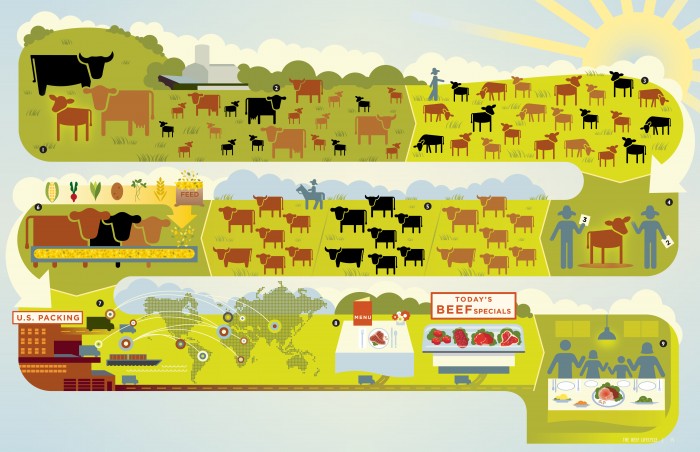
Basically the ranchers raise the calves to graze on pastures for most of their lives. When the cows are ready they are sent to a feedlot for 4-6 months where they are put on a high energy diet to complete the growing process, promote muscle growth, and develop adequate fat composition. From the feedlot they are sent off to be processed into the different types of cuts that we enjoy today.
On the tour we made a few stops. One was a beautiful ranch called Quarter Circle U Ranch out in Apache Junction, Arizona. It’s nestled into some gorgeous rocky hills in the middle of the desert. It’s one of the oldest permanent cattle ranches in Arizona, since being established back in 1876.
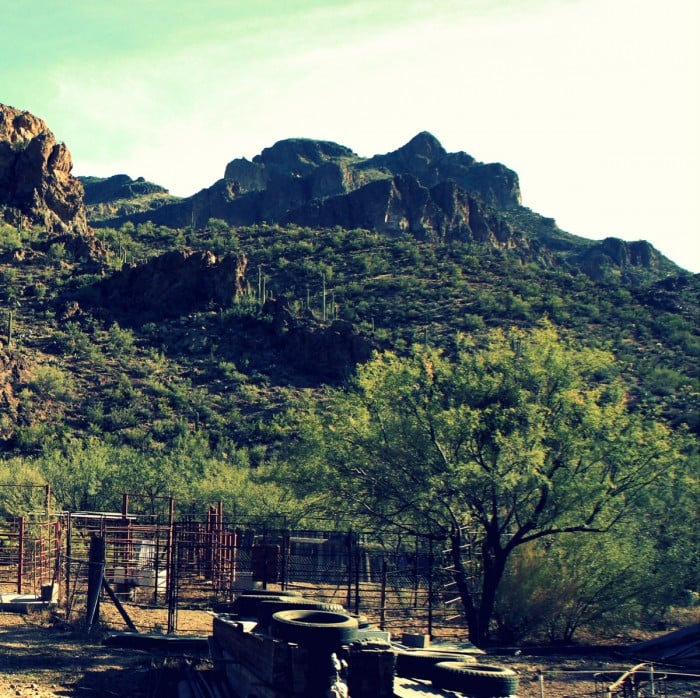
It was like stepping back in time to see Cowboys on horses. We met the owners of the ranch who told us of their clever new method to branding their cattle. What they use is a method called freeze branding. It requires the use of liquid nitrogen and a tilt squeeze-chute. The tilt squeeze-chute holds the calf safely and tilts it on his side. This allows the rancher to take the branding iron that was previously in liquid nitrogen and hold it against the calf’s hide for 20-30 seconds until it freezes the hair follicles. This turns the hair that will grow there white and their symbol is left on the cow, without permanently scarring the hide.
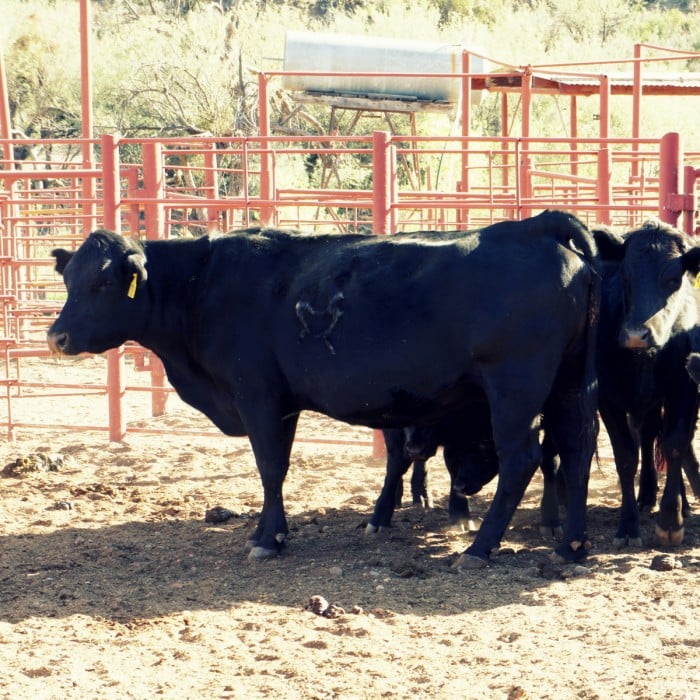
So why brand the cow in the first place? Well, on this ranch they let their cows roam free over 22 square miles of land. There are other ranches nearby and it helps the ranchers tell their cattle apart from the others.
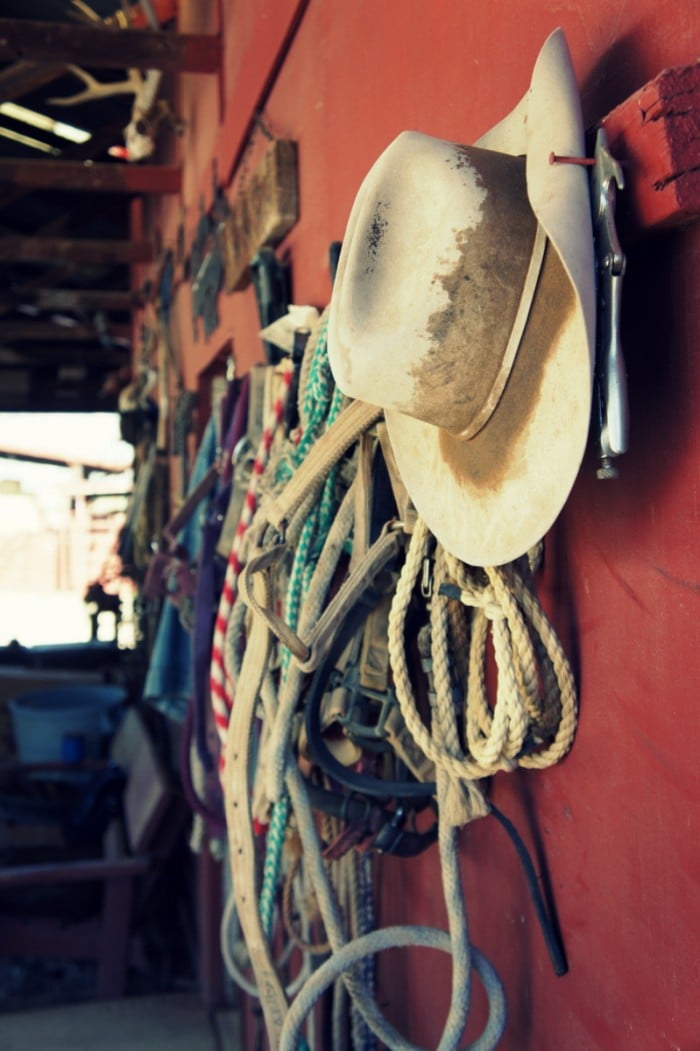
The owner of the ranch, Chuck Backus, strives to make improvements to the land, his cattle, and and also to the community. His ranch is broken up into several separate pastures with the use of fencing and natural terrain. He rotates the cattle in a herd through each pasture to allow the natural vegetation to have time to grow again.
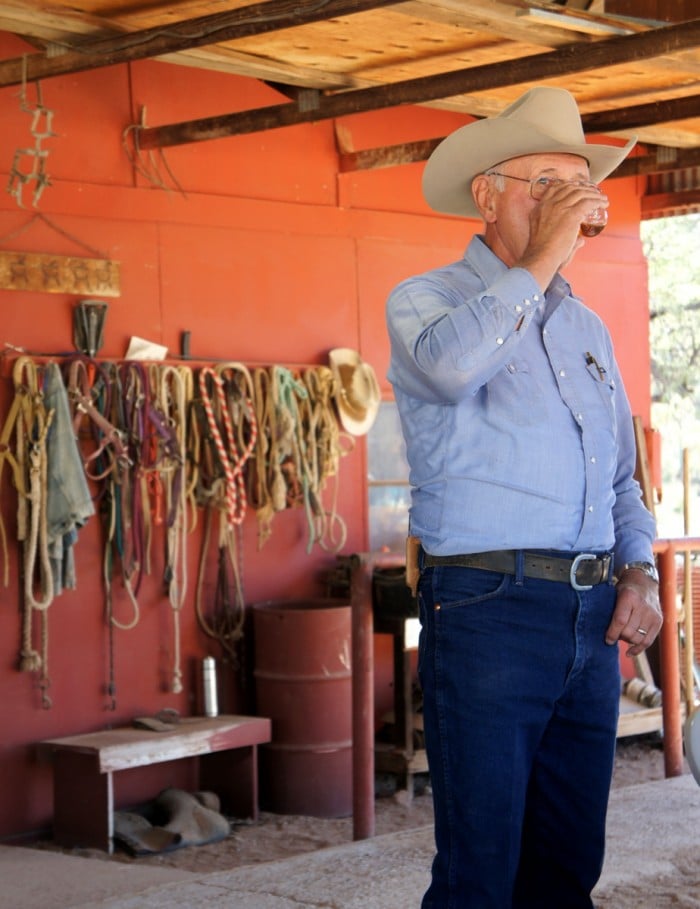
The life of a rancher is a full time job, and it’s all to bring up healthy cows for our consumption. It’s so awesome to be able to see where our meat is coming from. To know that real people, with a real passion for what they do, are behind the scenes working day after day so we can enjoy a good cut of beef.
After the cow has spent most of his life grazing on pastures they are sent to the feedlot where they will be fed a high energy diet for just 4-6 months. We had the opportunity to visit Pinal Feeding Company where they practice a natural feeding program for their cattle.
A natural program consists of high energy feed, no antibiotics, no hormones, and no beta agonist (which is an additive for muscle development). The cows are fed a combination of grains and byproducts, like dried distillers grain (or DDG).
You could see the combination of all the different grains in the feed. We even got to sample some of the corn (which looked oddly like corn flakes). Cattle are fed grains like corn because they are nutritious, energy-rich, and can be stored for use throughout the year. Since grass doesn’t grow year-round in most of the US, feeding grains like corn to cattle help farmers and ranchers raise a cinsisten, year-round supply of great tasting beef.
Cows are naturally curious creatures, so when we would walk by their feed they would back up and just stare at you. It was quite hilarious.
After the cows have “beefed up” at the feedlot, they are sent to a slaughter house to be processed into the delicious cuts we enjoy daily. And we should, and can enjoy it daily. Lean beef is a great source of nutrition with just 154 calories per 3 oz serving and 10 essential nutrients like B12, Zinc, and Iron!
So with all the cuts of beef out there, how do you know what is lean and what is not? Well the Arizona Beef Council has a fantastic chart that shows you not only the different types of cuts, but also the best ways to prepare them! (click on the picture to be taken to a higher resolution picture)
Did you know that it would take 6 tablespoons of peanut butter (564 calories) to equal the amount of protein you can get out of a 3 ounce serving of lean beef (154 calories). So instead of a peanut butter toast in the morning, start your day off right with a Steak and Egg Breakfast Taco!
Here are the recommended Internal Temperatures for Steaks and Roasts:
145 degrees F – medium rare
160 degrees F – medium
170 degrees F – well done
The recommended Internal Temperature for Ground Beef is:
160 degrees F – medium
170 degrees F – well done

Talk about information over-load! I learned so much on this tour with the Arizona Beef Council and I enjoy sharing it with you! The verdict after going on this tour??….A definite beef fan. Even more than before!
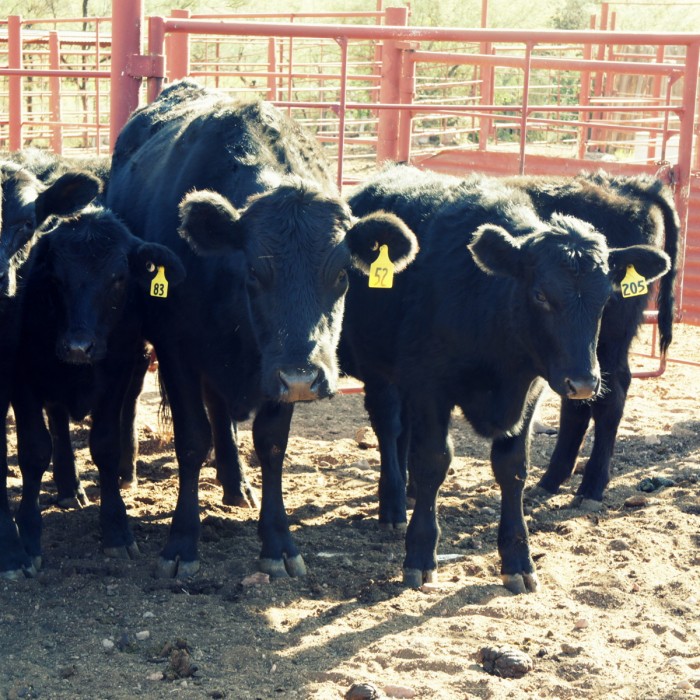
If you’re looking for more information check out the Arizona Beef Council’s website for more fun facts!
disclaimer: I was not compensated for this post. Some pictures were provided by the Arizona Beef Council. All thoughts and opinions are my own.

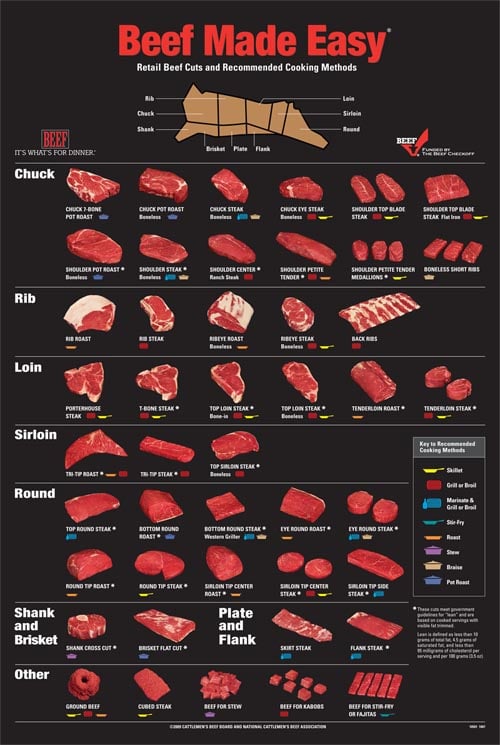
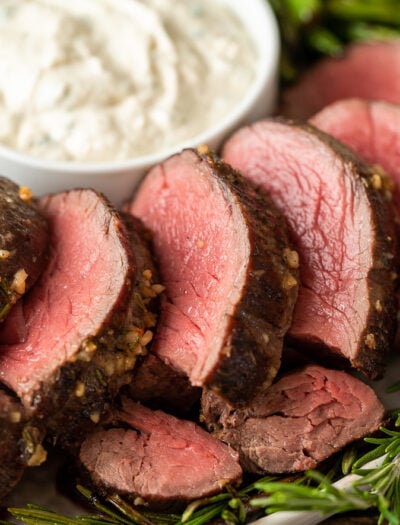
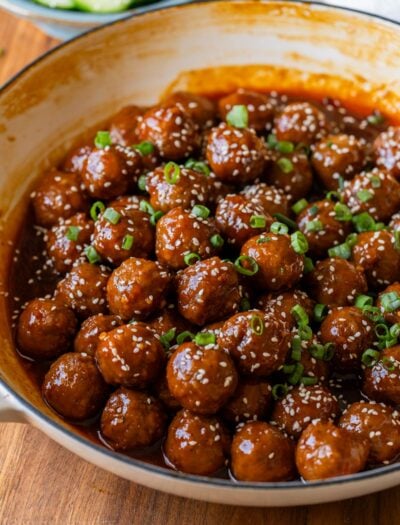

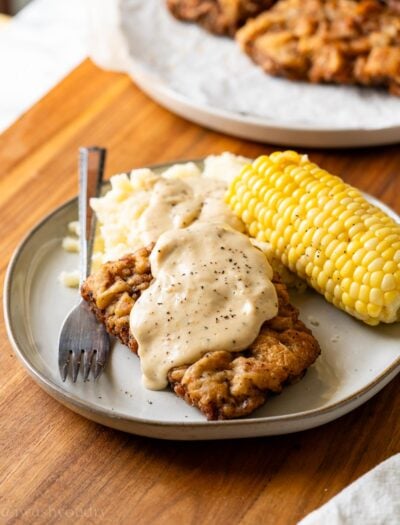
All types of wrought iron garden gates.
Great post and so descriptive! Love your photos. We loved having you on the tour!
Thanks for inviting me on the tour, it was awesome! 🙂
Mooo!
Haha! Delicious!
SO MUCH INFO! All great. Love the pics 🙂
Thanks! I have never developed any of my photos to frame before, but I really want to frame the picture of the cowboy hat. I love that one! 🙂
Most informative post thank you. In Australia we refer to the different stages as from Paddock to Plate.
How funny! Either way, I am sure the beef still tastes great! 😉